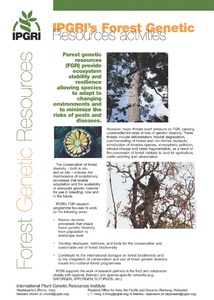Incentives +: how can REDD improve well-being in forest communities?
REDD initiatives are more likely to succeed if they build on the interests of forest communities and indigenous people. More attention is needed to the balance of incentives, benefits, rights and political participation across levels of decision making, interest groups and administration. Incentives can include payments or other benefits for good practices, developing alternative livelihoods, formalising land tenure and local resource rights and intensifying productivity on nonforest lands.


